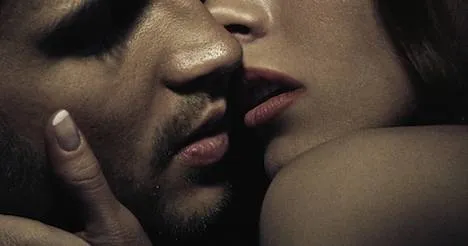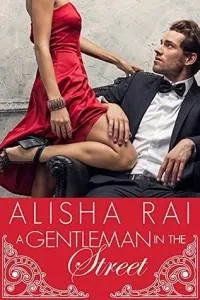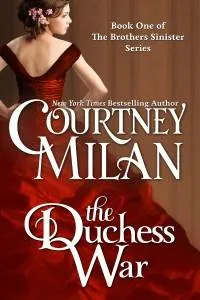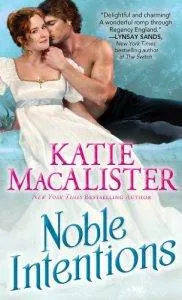
3 Tips for Great (Fictional) Sex
This content contains affiliate links. When you buy through these links, we may earn an affiliate commission.
Ladies and gentlemen, boys and girls, children of all…well, actually no children probably: it’s time once again for the Bad Sex in Fiction Award, bestowed by the discerning minds at the Literary Review. As always, 2016’s offerings were chuckle-worthy at best and cringe-worthy at worst, but there’s only one “winner,” and this year it was Italian novelist Erri De Luca. And for good reason. From The Day Before Happiness: “She wiggled her breasts beneath my hands and intensified the pushing. I went in up to my groin and came out almost entirely. My body was her gearstick.”
Well earned, sir.
Book Riot has had plenty of fun with the annual awarding of this illustrious prize, but it also offers us a reminder that writing a sex scene that’s true to an author’s story and characters isn’t easy. So let’s tip our hats to those who have mastered the craft of writing sex scenes: romance writers.
Not every romance author is great at writing sex scenes, and some don’t bother with it at all. But if a romance writer brought her publisher a sex scene that was as horrifying as the Bad Sex in Fiction nominees, she’d be out of her job faster than…well, there’s a relevant joke to be made here, but this is a family-friendly site, so I’ll let you fill in the blank.
To be fair, some of the scenes in the final round were almost definitely not intended to be sexy. Not even Lorelei James could make public bathroom sex that involves passport photos sexy (though I’d I’d one-click the hell out of any attempt she made). But in the event that literary writers have any interest in writing great sex, here are a few things these guys – and it’s worth noting that the nominees are mostly “guys” – might learn from reading a romance novel or two:
 1. The sex should serve the story. Despite the myths, romance is not actually “porn for women.” (Fun fact: it’s 2016 and a lot of porn is “porn for women.”) Sure, there’s sex in a lot of romance, but readers are usually interested in the way an author builds a story, and good writers use their sex scenes to do some of that work. In A Gentleman in the Street, Alisha Rai uses the early sex scenes in part to allow Akira to test Jacob’s interest and the compatibility of the couple. Robyn Carr uses sex in Virgin River to cement the slowly building relationship between Jack and Mel. In Think of England, KJ Charles uses it to keep Curtis and Daniel from being discovered investigating nefarious dealings, and the consequences ripple out through the rest of the story. Sex scenes are awesome. But they should be doing something, as opposed to just doing someone(s).
2. A great sex scene isn’t always about great sex. Sex scenes in romance novels have a reputation for being fantastic beyond all reason. But a great sex scene isn’t about the sex itself (see above), and a good writer can do a lot of good with bad sex.
1. The sex should serve the story. Despite the myths, romance is not actually “porn for women.” (Fun fact: it’s 2016 and a lot of porn is “porn for women.”) Sure, there’s sex in a lot of romance, but readers are usually interested in the way an author builds a story, and good writers use their sex scenes to do some of that work. In A Gentleman in the Street, Alisha Rai uses the early sex scenes in part to allow Akira to test Jacob’s interest and the compatibility of the couple. Robyn Carr uses sex in Virgin River to cement the slowly building relationship between Jack and Mel. In Think of England, KJ Charles uses it to keep Curtis and Daniel from being discovered investigating nefarious dealings, and the consequences ripple out through the rest of the story. Sex scenes are awesome. But they should be doing something, as opposed to just doing someone(s).
2. A great sex scene isn’t always about great sex. Sex scenes in romance novels have a reputation for being fantastic beyond all reason. But a great sex scene isn’t about the sex itself (see above), and a good writer can do a lot of good with bad sex.
 The Duchess War by Courtney Milan features my all time favorite fictional sex scene. When Robert and Minnie, both virgins, finally have sex, it goes…very badly. And it is awkward. Minnie immediately points out that it went very badly. Which makes it even more awkward. But then, after some careful conversation and hands-on education (some people are tactile learners, afterall), they again and things go much better. There is a tremendous amount of trust and intimacy in that conversation, and that exchange is far more interesting and important to the relationship and story than the sex itself.
3. Know the stakes. Writers of all stripes often take sex VERY seriously. Depending on the book, that might make sense. Sometimes the stakes are incredibly high because of emotions, history, or circumstances. Birth control is incredibly limited in historical romance, after all.
The Duchess War by Courtney Milan features my all time favorite fictional sex scene. When Robert and Minnie, both virgins, finally have sex, it goes…very badly. And it is awkward. Minnie immediately points out that it went very badly. Which makes it even more awkward. But then, after some careful conversation and hands-on education (some people are tactile learners, afterall), they again and things go much better. There is a tremendous amount of trust and intimacy in that conversation, and that exchange is far more interesting and important to the relationship and story than the sex itself.
3. Know the stakes. Writers of all stripes often take sex VERY seriously. Depending on the book, that might make sense. Sometimes the stakes are incredibly high because of emotions, history, or circumstances. Birth control is incredibly limited in historical romance, after all.
 But often sex can be (and should be) fun. This seems to be a key part of what many romance writers understand that many literary fiction writers do not. In Katie MacAlister’s historical romance Noble Intentions, she marries her hero and heroine early on to take the sexual edge off of both the characters and the plot. Gillian, the heroine, is sexually inexperienced and mystified by peculiarities of the male anatomy. But she takes tremendous joy in learning – aside from the brief moment wherein she thinks the sex may have killed her new husband – and the fun she’s having is contagious. Her delight in physical intimacy is reflected in the story’s tone throughout.
Sex may be instinctual, but writing about it in an effective way isn’t, and most literary fiction authors are amateurs. That’s completely fine, but maybe if they read a little romance and learn something from the pros, they won’t find themselves in Mr. De Luca’s shoes this time next year.
But often sex can be (and should be) fun. This seems to be a key part of what many romance writers understand that many literary fiction writers do not. In Katie MacAlister’s historical romance Noble Intentions, she marries her hero and heroine early on to take the sexual edge off of both the characters and the plot. Gillian, the heroine, is sexually inexperienced and mystified by peculiarities of the male anatomy. But she takes tremendous joy in learning – aside from the brief moment wherein she thinks the sex may have killed her new husband – and the fun she’s having is contagious. Her delight in physical intimacy is reflected in the story’s tone throughout.
Sex may be instinctual, but writing about it in an effective way isn’t, and most literary fiction authors are amateurs. That’s completely fine, but maybe if they read a little romance and learn something from the pros, they won’t find themselves in Mr. De Luca’s shoes this time next year.
 1. The sex should serve the story. Despite the myths, romance is not actually “porn for women.” (Fun fact: it’s 2016 and a lot of porn is “porn for women.”) Sure, there’s sex in a lot of romance, but readers are usually interested in the way an author builds a story, and good writers use their sex scenes to do some of that work. In A Gentleman in the Street, Alisha Rai uses the early sex scenes in part to allow Akira to test Jacob’s interest and the compatibility of the couple. Robyn Carr uses sex in Virgin River to cement the slowly building relationship between Jack and Mel. In Think of England, KJ Charles uses it to keep Curtis and Daniel from being discovered investigating nefarious dealings, and the consequences ripple out through the rest of the story. Sex scenes are awesome. But they should be doing something, as opposed to just doing someone(s).
2. A great sex scene isn’t always about great sex. Sex scenes in romance novels have a reputation for being fantastic beyond all reason. But a great sex scene isn’t about the sex itself (see above), and a good writer can do a lot of good with bad sex.
1. The sex should serve the story. Despite the myths, romance is not actually “porn for women.” (Fun fact: it’s 2016 and a lot of porn is “porn for women.”) Sure, there’s sex in a lot of romance, but readers are usually interested in the way an author builds a story, and good writers use their sex scenes to do some of that work. In A Gentleman in the Street, Alisha Rai uses the early sex scenes in part to allow Akira to test Jacob’s interest and the compatibility of the couple. Robyn Carr uses sex in Virgin River to cement the slowly building relationship between Jack and Mel. In Think of England, KJ Charles uses it to keep Curtis and Daniel from being discovered investigating nefarious dealings, and the consequences ripple out through the rest of the story. Sex scenes are awesome. But they should be doing something, as opposed to just doing someone(s).
2. A great sex scene isn’t always about great sex. Sex scenes in romance novels have a reputation for being fantastic beyond all reason. But a great sex scene isn’t about the sex itself (see above), and a good writer can do a lot of good with bad sex.
 The Duchess War by Courtney Milan features my all time favorite fictional sex scene. When Robert and Minnie, both virgins, finally have sex, it goes…very badly. And it is awkward. Minnie immediately points out that it went very badly. Which makes it even more awkward. But then, after some careful conversation and hands-on education (some people are tactile learners, afterall), they again and things go much better. There is a tremendous amount of trust and intimacy in that conversation, and that exchange is far more interesting and important to the relationship and story than the sex itself.
3. Know the stakes. Writers of all stripes often take sex VERY seriously. Depending on the book, that might make sense. Sometimes the stakes are incredibly high because of emotions, history, or circumstances. Birth control is incredibly limited in historical romance, after all.
The Duchess War by Courtney Milan features my all time favorite fictional sex scene. When Robert and Minnie, both virgins, finally have sex, it goes…very badly. And it is awkward. Minnie immediately points out that it went very badly. Which makes it even more awkward. But then, after some careful conversation and hands-on education (some people are tactile learners, afterall), they again and things go much better. There is a tremendous amount of trust and intimacy in that conversation, and that exchange is far more interesting and important to the relationship and story than the sex itself.
3. Know the stakes. Writers of all stripes often take sex VERY seriously. Depending on the book, that might make sense. Sometimes the stakes are incredibly high because of emotions, history, or circumstances. Birth control is incredibly limited in historical romance, after all.
 But often sex can be (and should be) fun. This seems to be a key part of what many romance writers understand that many literary fiction writers do not. In Katie MacAlister’s historical romance Noble Intentions, she marries her hero and heroine early on to take the sexual edge off of both the characters and the plot. Gillian, the heroine, is sexually inexperienced and mystified by peculiarities of the male anatomy. But she takes tremendous joy in learning – aside from the brief moment wherein she thinks the sex may have killed her new husband – and the fun she’s having is contagious. Her delight in physical intimacy is reflected in the story’s tone throughout.
Sex may be instinctual, but writing about it in an effective way isn’t, and most literary fiction authors are amateurs. That’s completely fine, but maybe if they read a little romance and learn something from the pros, they won’t find themselves in Mr. De Luca’s shoes this time next year.
But often sex can be (and should be) fun. This seems to be a key part of what many romance writers understand that many literary fiction writers do not. In Katie MacAlister’s historical romance Noble Intentions, she marries her hero and heroine early on to take the sexual edge off of both the characters and the plot. Gillian, the heroine, is sexually inexperienced and mystified by peculiarities of the male anatomy. But she takes tremendous joy in learning – aside from the brief moment wherein she thinks the sex may have killed her new husband – and the fun she’s having is contagious. Her delight in physical intimacy is reflected in the story’s tone throughout.
Sex may be instinctual, but writing about it in an effective way isn’t, and most literary fiction authors are amateurs. That’s completely fine, but maybe if they read a little romance and learn something from the pros, they won’t find themselves in Mr. De Luca’s shoes this time next year.












